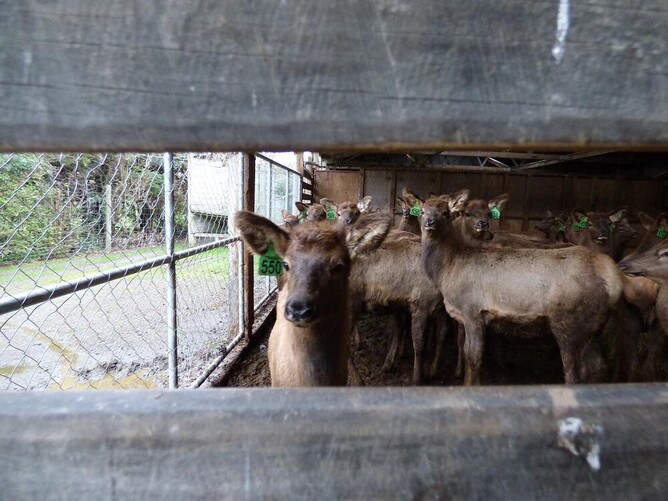Yersiniosis is one of the main causes of death in weaner deer in their first autumn/winter. A yersinia outbreak can result in losses of around 10-30% in unvaccinated herds, compared with just 3% or less in vaccinated herds.
The yersinia bacteria (Yersinia Psuedotuberculosis) are widespread on soil, water and pasture. Carrier animals, such as deer, birds, rabbits, pigs, cattle or sheep, shed the bacteria in their faeces. Deer then become infected by eating or drinking contaminated material.
Stress is a major factor in making fawns vulnerable to yersiniosis around the time of weaning. Some of the main stresses include:
Weaning
Cold, wet, windy weather
Underfeeding, or a sudden change of feed
Transportation
A heavy internal parasite burden
Mixing with strange deer.
Stressed or cold weaners stop eating, and quickly lose body heat. As a result, their intestinal movements slow down, allowing yersinia bacteria to multiply. The bacteria produce toxins that damage the intestine, leading to rapid fluid loss, bleeding, dehydration and death.
Signs of infection
Affected deer are usually dull, don’t eat and stand apart from the mob. Some other signs of a possible yersinia infection can be:
Green watery diarrhoea, which turns dark and bloody as the disease progresses.
Staining of the hocks and hair around the tail.
Dehydration and weakness.
Some deer may be found dead without having shown any signs of disease.
Infected deer with no major stressors will usually not present with full-blown clinical symptoms and show only mild symptoms. They will, however, shed the bacteria for some weeks or months, which could be the starting point for an outbreak when, for example, a cold weather event hits.
The two most important parts of a yersiniosis prevention strategy are reducing stress, and vaccination.
Weaner deer have to deal with the stresses of weaning, colder weather and potentially suboptimal and/or changing food supplies.
To reduce stress:
Provide good feed and adequate shelter.
Avoid keeping deer in the yards for extended periods.
Keep worm burdens low.
Ensure trace element status is adequate.
Put a quiet, older “nanny hind” in with newly weaned fawns, as this can help calm them.
The other part of the preventative approach is to vaccinate weaners with Yersiniavax. Two doses are required three to six weeks apart.
The timing of the first dose is critical. Ideally, it should be done in the autumn before the risk of bad weather, and before young deer have been mobbed together.
Remember animals have to be a minimum of twelve weeks old when getting their first vaccination.
Vaccinating before weaning can be challenging, but leaving deer unprotected until after the rut could lead to disease outbreaks. The vaccine will not stop all outbreaks, but does decrease death rates.
The timing of vaccination is a complicated issue. Together with your vet, you can come up with a plan that suits your farming system best. It is important that animals are fully vaccinated two weeks before the risk period.
The main options are:
Pre-rut weaning: This is normally in late February/early March when fawns are 12 to 15 weeks old.
Give the first vaccine dose at around the time of weaning and the second, 3 to 6 weeks later.
If the fawns are going to be transported soon after weaning, give the first vaccine dose before the fawns reach 12 weeks of age, but before weaning.
A second dose will be needed 3 to 6 weeks later.
A third vaccination will then be required 3-6 weeks after the second dose when fawns were younger than 12 weeks at the time of the initial dose.
Post-rut weaning:
Give the first vaccine dose in late February/early March when hinds and fawns are put in mating groups.
Give the second dose in early April when mobs are yarded to change stags.
Again, a third vaccination will then be required 3-6 weeks after the second dose when fawns were younger than 12 weeks at the time of the initial dose.
Remember, vaccinating weaner deer with Yersiniavax is not a silver bullet to stop all potential problems with yersinia. Emphasis should be put on nutrition, and good protocols to minimise worm burdens and reduce stress to an absolute minimum. All these will help to maximise the positive effect of vaccinating your weaner deer.
AVAILABLE ONLY UNDER VETERINARY AUTHORISATION.
ACVM No: A6151. Schering-Plough Animal Health Limited
- Theo Wieggers

